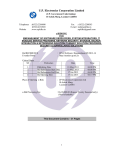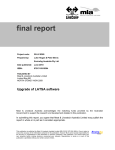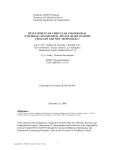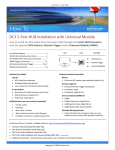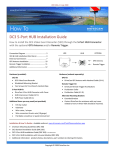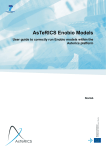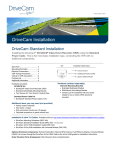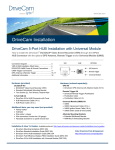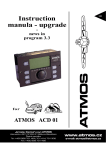Download Driver risk assessment system and method employing selectively
Transcript
USOO8849501B2 (12) Unlted States Patent (10) Patent N0.: Cook et a1. (54) (45) Date of Patent: DRIVER RISK ASSESSMENT SYSTEM AND 5,140,436 A METHOD EMPLOYING SELECTIVELY a a 5,574,424 A _ 5,600,775 A IHVBIIIOFSI Bryon Cook, San Dlego, CA (Us); Peter Ellegaard, San Diego, CA (US); 5,689,442 A 5,815,093 A 31% t 31 1 . 2/1997 King et al. 11/1997 Swanson et al. 9/1998 Kikinis (Continued) (73) Assignee: Lth, IIlC., San Diego, CA (US) Notice: 1e 11/1996 Nguyen Louis Gilles, San Diego, CA (U S) (*) Sep. 30, 2014 8/ 1992 Blessinger 2 AUTOMATIC EVENT SCORING (75) US 8,849,501 B2 FOREIGN PATENT DOCUMENTS Subject to any disclaimer, the term of this patent is extended or adjusted under 35 DE EP 4416991 1818873 11/1995 8/2007 U.S.C. 154(b) by 780 days. OTHER PUBLICATIONS (21) App1.No.: 12/691,639 (22) Filed: David Cullen, “Getting a real eyeful”, Fleet Owner Magazine, Feb. Jan. 21, 2010 2002 Ronnie Rittenberry, “Eyes on the Road”, Jul. 2004. (65) Prior Publication Data US 2010/0191411A1 Ju1.29,2010 (Continued) Related US Application Data Primary Examiner * Ronnie Mancho (74) Attorney, Agent, or Firm * Van Pelet, Yi & James LLP (63) Continuation-in-part of application No. 12/359,787, ?led on Jan. 26, 2009, now Pat. No. 8,269,617. (57) (51) (52) Int. Cl. G06F 19/00 (201101) B60Q 1/00 (200601) U 5 Cl U'Séc ' ( ) UISPCO "" ,? t, s ' i1 ’ S 1. ’ ' as“ c2011): 26;“; 9 300 4 08 4 0 0 33 4 1 37’ 7 ’33 9’3 4 0[13 9 2‘39 2‘25'5’ 340/438'_ ’705'/1’1 t. ?l f ee app 10a Ion (5 6) i8 707/758 E17 01'4’ ' ’ ' 1 t . Selectively Automatic Event Scoring. The system and 701/33 4_ 71/33 9_ 71/1_ 340/439 F, M f Cl . A Dr1ver Rlsk Assessment System and Method Employmg """""""" " 705/758, 707/758 70’7 /E17 014’ 58 ABSTRACT . ’ ’ 7 07' /7 5 4’ h h. t e or comp e e seam Is my method provides robust and reliable event scoring and report ing, While also optimizing data transmission bandWidth. The system includes onboard vehicular driving event detectors that record data related to detected driving events, selectively store or transfer data related to said detected driving events. If elected, the onboard vehicular system Will score a detected driving event, compare the local score to historical values previously stored Within the onboard system, and upload selective data or data types to a remote server or user if the system concludes that a serious driving event has occurred. References Cite d The system may further respond to independent user requests U.S. PATENT DOCUMENTS by transferring select data to said user at a variety of locations and formats. 4,281,354 A 7/1981 Conte 4,718,685 A * 1/1988 Kawabe et al. ............. .. 180/415 - - - - - 1 mm 1 41mm ‘ ma/vnz 1.1:. 52 | 2 REMOTE DIS?!” I | l- _ __ _. ._ _. J I- '- " - - - I | mac/1y ' | . I | : 4042mm)” : I l | my I | ' | I l Ron | YAW I 31 29 II W l | | I | 1 | 56 R | I | l l : as mm 1 I l 12 Claims, 6 Drawing Sheets | I | cams: I | [IRISH/AWN | l l l k ' I | 29 : Mnmu : 31 54 US 8,849,501 B2 Page 2 (56) “DriveCam, Inc’s Disclosure of Responsive Constructions and References Cited Extrinsic Evidence Pursuant to Patent L.R. 4.1.c & 4.1d” in DriveCam, Inc. v. SmartDrive Systems, Inc., Case No. 3:11-CV 00997-H-RBB, for the Southern District of California. Nov. 15, 201 1. “Responsive Claim Construction and Identi?cation of Extrinsic Evi dence of Defendant/Counterclaimant SmartDrive Systems, Inc.” in DriveCam, Inc. v. SmartDrive Systems, Inc., Case No. 3:11-CV 00997-H (RBB), for the Southern District of California. Nov. 15, 201 1. “Joint Claim Construction Chart” in DriveCam, Inc. v. SmartDrive U.S. PATENT DOCUMENTS 5,825,284 A 6,141,611 A 7,702,442 B2 10/1998 10/2000 12/2000 5/2002 6/2002 9/2002 6/2003 4/2004 4/2007 4/2010 7,821,421 B2* 10/2010 Tamiretal. ................. .. 340/901 8,140,358 B1* 8,311,858 B2* 8,508,353 B2* 3/2012 11/2012 8/2013 Ling et a1. ....................... .. 705/4 Everett et al. ................... .. 705/4 Cooket al. .................. .. 340/439 6,163,338 A 6,389,340 B1 6,405,132 B1 6,449,540 B1 6,575,902 B1 6,718,239 B2 7,209,833 B2 2001/0005804 A1 2002/0111725 A1 2002/0163532 2003/0080878 2004/0039503 2004/0054513 2004/0103010 2004/0153362 2004/0236474 2005/0073585 Dunwoody et al. Mackeyet al. Johnson et al. Rayner Breed et al. Rayner Burton Rayner Isajiet al. Takenaka 6/2001 Rayner 8/2002 Burge A1 11/2002 Thomas et al. A1 5/2003 Kirmuss A1 2/ 2004 Doyle A1* 3/2004 Laird et al. ...................... .. A1 5/ 2004 Wahlbin et a1. A1 8/ 2004 Bauer et al. A1 1 1/ 2004 Chowdhary et al. A1 4/ 2005 Ettinger et al. Data Recorder” for Case No. 3:11-CV-00997-H-RBB, Document 43-1, ?led Dec. 1, 2011, pp. 1-33. “Joint Claim Construction Worksheet” in DriveCam, Inc. v. SmartDrive Systems, Inc. , Case No. 3: 11-CV-00997 H (RBB), for the Southern District of California, Document 44, ?led Dec. 1, 201 1, pp. 1-2. 703/8 2005/0137757 A1* 6/2005 2005/0166258 A1 7/2005 Vasilevsky et a1. 2006/0053038 A1 3/2006 Warren et al. ................... .. 705/4 2006/0103127 A1 2006/0212195 A1 5/2006 Lie et al. 9/2006 Veith et al. 2006/0253307 A1 Systems, Inc., Case No. 11-CV-0997-H (RBB), for the Southern District of California, Document 43, ?led Dec. 1, 2011, pp. 1-2. Joint Claim Construction Chart, US. Patent No. 6,389,340, “Vehicle Phelan et al. ................... .. 701/1 11/2006 Warren et al. ................... .. 705/4 Joint Claim Construction Worksheet, US. Patent No. 6,389,340, “Vehicle Data Reporter” for Case No. 3: 11-CV-00997-H-RBB, Document 44-1, ?led Dec. 1, 2011, pp. 1-10. “Answer to Amended Complaint; Counterclaims; and Demand for Jury Trial” in DriveCam, Inc. v. SmartDrive Systems, Inc., Case No. 3:11-CV-00997 H (RBB), for the Southern District of California, Document 47, ?led Dec. 13, 2011, pp. 1-15. “First Amended Answer to Amended Complaint and First Amended Counterclaims; and Demand for Jury Trial” in DriveCam, Inc. v. SmartDrive Systems, Inc. , Case No. 3: 11-CV-00997 H (RBB), for the 2007/0001831 A1 1/2007 RaZ et al. Southern District of California, Document 53, ?led Dec. 20, 2011, 2007/0027583 A1* 2007/0027726 A1 2/2007 Tamir et al. ..................... .. 701/1 2/2007 Warren et al. ................... .. 705/4 2007/0124332 2007/0135979 2007/0136078 2007/0150140 5/2007 Ballesty et al. 6/2007 Plante 6/2007 Plante pp. 1-48. “First Amended Answer to Amended Complaint and First Amended Counterclaims; and Demand for Jury Trial” in DriveCam, Inc. v. SmartDrive Systems, Inc. , Case No. 3: 11-CV-00997 H (RBB), for the A1 A1 A1 A1 2007/0173994 A1 2007/0216521 A1 2007/0241874 2007/0257781 2007/0257804 2007/0257815 2007/0260677 2007/0268158 2007/0271105 A1 A1 A1 A1 A1 A1 A1 2007/0299612 A1 2008/0167775 A1 6/2007 Seymour Southern District of California, Document 55, ?led Jan. 3, 2012, pp. 7/2007 9/2007 86-103. Kubo et al. ................... .. 701/35 Guensler et al. ............ .. 340/439 10/ 2007 Okpysh et al. 11/2007 Denson 11/2007 Gunderson et a1. ......... .. 340/576 11/2007 Gunderson et a1. . 340/903 11/2007 DeMarco et al. 11/2007 Gunderson et a1. ......... .. 340/933 11/2007 Gunderson et a1. 12/2007 Kimura et al. ...... .. 705/1 . 701/301 7/2008 Kuttenberger et al. ....... .. 701/36 2008/0269978 A1 10/2008 Shirole 2009/0224869 A1* 2009/0312998 A1* 9/2009 12/2009 Baker et al. .................. .. 340/5.1 Berckmans et al. .......... .. 703/11 2010/0063672 A1 2010/0070175 A1 2010/0085193 A1 3/2010 Anderson 3/2010 Soulchin et al. 4/2010 Boss etal. 2010/0153146 A1* 6/2010 Angellet al. ................... .. 705/7 2011/0077028 A1 3/2011 Wilkes et al. DriveCam, User’s Manual for DriveCam Video Systems, HindSight 20/20 Software Version 4.0, S002751-S002804(2003). SmartDrives Systems, Inc.’s Production, S014246-S014255, Nov. 16, 201 1. “Supplement to DriveCam’s Disclosure of Asserted Claims and Pre liminary Infringement Contentions” in DriveCam, Inc. v. SmartDrive Systems, Inc., Case No. 3: 1 1-CV-00997-H-RBB, for the Southern District of California. Oct. 14, 2011. “DriveCam’s Disclosure of Asserted Claims and Preliminary Infringement Contentions” in DriveCam, Inc. v. SmartDrive Sys tems, Inc., Case No. 3:11-CV-00997-H-RBB, for the Southern Dis trict of California. Aug. 19, 2011. DriveCam, Inc.’s Infringement Contentions Exhibit A, US. Patent 6,389,340. Aug. 11,2011. DriveCam, Inc.’s Infringement Contentions Exhibit B, US. Patent 7,659,827. Aug. 19,2011. DriveCam, Inc.’s Infringement Contentions Exhibit C, US. Patent OTHER PUBLICATIONS “HindSight v4.0 Users Guide”, DriveCam Video Systems, Apr. 25, 2005. Glenn Oster, “HindSight 20/20 v4.0 Software Installation”, 1 of 2, Jun. 20, 2003. Glenn Oster, “HindSight 20/20 v4.0 Software Installation”, 2 of 2, Jun. 20, 2003. DriveCam Extrinsic Evidence with Patent LR 4.1.A Disclosures, Nov. 8, 2011. “DriveCam, Inc’s Disclosure of Proposed Constructions and Extrin sic Evidence Pursuant to Patent L.R. 4.1 .a & 4. 1 .b” in DriveCam, Inc. v. SmartDrive Systems, Inc., Case No. 3:11-CV-00997-H-RBB, for the Southern District of California. Nov. 8, 2011. “Preliminary Claim Construction and Identi?cation of Extrinsic Evi dence of Defendant/Counterclaimant SmartDriveSystems, Inc.” in DriveCam, Inc. v. SmartDrive Systems, Inc., Case No. 3:11-CV 00997-H (RBB), for the Southern District of California. Nov. 8,2011. 7,804,426. Aug. 19,2011. U.S. Appl. No. 11/297,669, ?led Dec. 8, 2005, File History. “Amended Complaint for Patent Infringement, Trade Secret Misap propriation, Unfair Competition and Conversion” in DriveCam, Inc. v. SmartDrive Systems, Inc., Case No. 3:11-CV-00997-H-RBB, for the Southern District of California, Document 34, ?led Oct. 20, 2011, pp. 1-15. U.S. Appl. No. 11/296,906, ?led Dec. 8, 2005, File History. US. Appl. No. 11/298,069, ?led Dec. 9, 2005, File History. US. Appl. No. 11/299,028, ?led Dec. 9, 2005, File History. US. Appl. No. 11/593,659, ?led Nov. 7, 2006, File History. US. Appl. No. 11/593,682, ?led Nov. 7, 2006, File History. US. Appl. No. 11/595,015, ?led Nov. 9, 2006, File History. US. Appl. No. 11/637,754, ?led Dec. 13, 2006, File History. US. Appl. No. 11/637,755, ?led Dec. 13, 2006, File History. Drivecam, Inc., User’s Manual for Drivecam Video Systems’ Hind sight 20/20 Software Version 4.0 (2003). US 8,849,501 B2 Page 3 (56) References Cited Karen, “Managers Guide to the DriveCam Driving Feedback Sys tem”, Jul. 30, 2002. OTHER PUBLICATIONS Jessyca Wallace, “Analyzing and Processing DriveCam Recorded Gary and Sophia Rayner, Final Report for Innovations Deserving Events”, Oct. 6, 2003. Del Lisk, “DriveCam Training Handout Ver4”, Feb. 3, 2005. Jessyca Wallace, “Overview of the DriveCam Program”, Dec. 15, Exploratory Analysis (IDEA) Intelligent Transportation Systems (ITS) Programs’ Project 84, I-Witness Black Box Recorder, San Diego, CA. Nov. 2001. Panasonic Corporation, Video Cassette Recorder (VCR) Operating Instructions for Models No. PV-V4020/PV-V4520 (1998) (Exhibit 8) (hereinafter “Panasonic”). JV C Company of America, JV C Video Cassette Recorder HR-IP820U Instructions (1996). Hans Fantel, Video; Search Methods Make a Difference in Picking VCR’s, NY Times, Aug. 13, 1989. Dan Carr, Flash Video template: Video Presentation with Navigation, Jan. 16, 2006. I/O Port Racing Supplies’ website discloses using Traqmate’s Data Acquisition with Video Overlay system in conjunction with profes sional driver coaching sessions (available at http://www.ioportrac ing.com/Merchant2/merchant.mvc?ScreenICTGY&Categoryi CodeIcoaching)., printed from site on Jan. 11, 2012. GE published its VCR User’s Guide for Model VG4255 in 1995. Adaptec published and sold its VideoOh! DVD software USB 2.0 Edition in at least Jan. 24, 2003. 2005. “DriveCamiHluminator Data Sheet”, Oct. 2, 2004. Karen, “Downloading Options to HindSight 20/ 20”, Aug. 6, 2002. Bill, “DriveCamiFAQ”, Dec. 12, 2003. David Maher, “DriveCam Brochure Folder”, Jun. 6, 2005. “Passenger Transportation Mode Brochure”, May 2, 2005. Quinn Maughan, “DriveCam Unit Installation”, Jul. 21, 2005. Glenn Oster, “Illuminator Installation”, Oct. 3, 2004. Quinn Maughan, “HindSight Installation Guide”, Sep. 29, 2005. Quinn Maughan, “HindSight Users Guide”, Jun. 20, 2005. “Ambulance Companies Use Video Technology to Improve Driving Behavior”, Ambulance Industry Journal, Spring 2003. Lisa McKenna, “A Fly on the Windshield?”, Pest Control Technology Magazine, Apr. 2003. Quinn Maughan, “Enterprise Services”, Apr. 17, 2006. Oct. 2, 2005 (available at http://www.trackvision.net/phpBB2/ Quinn Maughan, “DriveCam Enterprise Services”, Jan. 5, 2006. Quinn Maughan, “DriveCam Managed Services”, Jan. 5, 2006. Quinn Maughan, “DriveCam Stande Edition”, Jan. 5, 2006. Kathy Latus (Latus Design), “Case StudyiTime Warner Cable”, Sep. 23, 2005. Kathy Latus (Latus Design), “Case Study4Cloud 9 Shuttle”, Sep. viewtopic.php?t:51&sid:l184fbbcbe3be5c87ffa0f2ee6e2da76), 23, 2005. printed from site on Jan. 11, 2012. David Vogeleer et al., Macromedia Kathy Latus (Latus Design), “Case StudyiLloyd Pest Control”, Jul. Traqmate GPS Data Acquisition’s Traqmate Data Acquisition with Video Overlay system was used to create avideo of a driving event on Flash Professional 8UNLEASHED (Sams Oct. 12, 2005) in Nov. 2005. Jean (DriveCam vendor), “DriveCam brochure”, Nov. 6, 2002. “The DriveCam”, Nov. 6, 2002. Jean (DriveCam vendor), “DC Data Sheet”, Nov. 6, 2002. “Driver Feedback System”, Jun. 12, 2001. Jean (DriveCam vendor), “Feedback Data Sheet”, Nov. 6, 2002. “Interior Camera Data Sheet”, Oct. 26, 2001. Jean (DriveCam vendor), “HindSight 20-20 Data Sheet”, Nov. 4, 2002. “DriveCam Driving Feedback System”, Mar. 15, 2004. Chris Woodyard, “Shuttles save with DriveCam”, Dec. 9, 2003. Julie Stevens, “DriveCam Services”, Nov. 15, 2004. Julie Stevens, “Program Support Roll-Out & Monitoring”, Jul. 13, 2004. 19, 2005. Bill Siuru, “DriveCam Could SaveYou Big Bucks”, Land Line Maga zine, May-Jun. 2000. J. Gallagher, “Lancer Recommends Tech Tool”, Insurance and Tech nology Magazine, Feb. 2002. “World News Tonight”, CBS Television New Program discussing teen drivers using the DriveCam Program and DriveCam Technol ogy, Oct. 10, 2005, on PC formatted CD-R, World News Tonight. wmv, 7.02 MB, Created Jan. 12,2011. “World News Tonight”, PBS Television New Program discussing teen drivers using the DriveCam Program and DriveCam Technol ogy, Oct. 10, 2005, on PC formatted CD-R, Teens Behind the Wheel. wmv, 236 MB, Created Jan. 12, 2011. PCT/US2010/022012, Invitation to Pay Additional Fees with Com munication of Partial International Search, Jul. 21, 2010. Jessyca Wallace, “The DriveCam Driver Feedback System”, Apr. 6, 2004. * cited by examiner US. Patent Sep. 30, 2014 Sheet 1 0f6 J US 8,849,501 B2 FIGURE 1 SENSOR MODUIE HO sak/ FIGURE 2 US. Patent Sep. 30, 2014 Sheet 2 0f6 US 8,849,501 B2 A 75° /‘\l:> Processor Hi /‘\‘:> Main L56 Memory C Secondary g Memory 15-3 .8 a, g 3 Em Hard Disk Drive g 0 M m <:> Removable 778 Storage Drive E2 Remoyable Medium 778 m External Medium Interface 131 Z 776 <:> Communication @ Interface 1 Figure 3 778 US. Patent Sep. 30, 2014 Sheet 3 0f6 US 8,849,501 Bz [-650 652 654\ 656 660\ 662\ _ Demodulator 664 ' Multiplexor —’<l/ Baseband Processor Modulator I3 /-666 658 “ W Hardware Interface _ Central. ' Progisif'ng 670 672/ Figure 4 668/ US. Patent Sep.30,2014 US 8,849,501 B2 Sheet40f6 MEMQ 5%Saga v.2 th 203% @56 osmmE 2&wa hmwacm \" “Esq1: _vJA Em _ AQn:_ gm" \ Es:_ _ km. mmE_E “3_2% n EE% _ _ _ _ _ _ _ _ _ _ _ _ _ _ _ _ _ _ _ _ _ _ _ _ US. Patent Sep. 30, 2014 Sheet 5 0f6 US 8,849,501 B2 41 34 \ REMOTE STORAGE US. Patent Sep. 30, 2014 ?ll/5013(1) SENSORQ) DATA DA TA 20 Sheet 6 0f6 US 8,849,501 B2 SENSORI'N) DATA SENSORI'BJ mm 2 20 DRIVER I. D. 20 J, 35 30A 50 -—> 4—— 10041 $012,405 102 m5 100 PRIOR mm DATA ouwur REQUEST? apnorvs 100.41 11 AUTO scorer/m ms ms 04 GENERATE tOCAI. EVENT SCORE UPIOAD "a REQUESJED DATA T0 man; STORAGE/ wswmy COMPARE 100,41 EVENT scam T0 ‘ srmasv VALUES 112 FIGURE 7 US 8,849,501 B2 1 2 DRIVER RISK ASSESSMENT SYSTEM AND METHOD EMPLOYING SELECTIVELY AUTOMATIC EVENT SCORING driver geolocation and duration in risky locations. Warren, et al., US20060053038 is related to the ’307 Warren, that further includes activity parameters in determining driver risk. Kut tenberger, et al., is a “Method and Device for Evaluating Driving Situations.” This system does calculate driving risk This application is an improvement upon the systems, methods and devices previously disclosed in application Ser. No. 11/382,222, ?led May 8, 2006, Ser. No. 11/382,239 ?led based upon accelerometers and other vehicle characteristics. Finally, Kuboi, et al. is a “Vehicle BehaviorAnalysis System” that includes GPS, video and onboard triggers for noti?ca tion/storing/uploading data related to the vehicle behavior. There are other prior references dealing with the analysis May 8,2006, Ser.No. 11/566,539 ?led May 8,2006, Ser.No. 11/467,694 ?led May 9,2006, Ser.No. 11/382,328 ?led May 9, 2006, Ser. No. 11/382,325 ?led May 9, 2006, Ser. No. 11/465,765 ?led Aug. 18, 2006, Ser. No. 11/467,486 ?led Aug. 25, 2006, Ser. No. 11/566,424 ?led Dec. 4, 2006, Ser. of the detected data to identify occurrences that would be classi?ed as “driving events” of signi?cance to the driver or No. 11/566,526 ?led Dec. 4, 2006, and Ser. No. 12/359,787 ?led J an. 26, 2009 all now pending (the “PriorApplications”), driver’s supervisory organization. These references include: Raz, et al. US. Pat. No. 7,389,178 for “System and Method forVehicle Driver BehaviorAnalysis and Evaluation”, Raz, et al., US. Pat. No. 7,561,054 for “System and Method for Displaying a Driving Pro?le,” and Raz, et al., US. Patent Application Publication No. 2007/0005404 for “System and Method for Providing Driving Insurance.” All of these Raz and as such, the discloses of those Prior Applications are incorporated herein by reference. This application is a continuation-in-part of application Ser. No. 12/359,787, ?led Jan. 26, 2009 now US. Pat. No. 8,269,617. 20 BACKGROUND OF THE INVENTION ates a “string” of “maneuvers” that the system recognizes from a database of data that has been previously been identi 1. Field of the Invention This invention relates generally to systems for analyzing driving events and risk and, more speci?cally, to a Driver Risk ?ed as representing such maneuvers. 25 Assessment System and Method Employing Selectively Automatic Event Scoring. A detailed review of each of these prior systems has been conducted, and while each and every one of them discloses what is purported to be a novel system for vehicle risk moni 2. Description of Related Art toring, reporting and/or analysis, none of these prior systems The surveillance, analysis and reporting of vehicular acci dents and “events” has, for some time, been the focus of numerous inventive and commercial efforts. These systems seek to monitor a vehicle’ s condition while being driven by a driver, and then record and report whenever a “hazardous” references are based upon a system and method that analyzes the raw data collected by the vehicle data sensors and gener suggests a system that employs an operational architecture 30 that adequately recognizes the commercial limitations of wireless data transfer networks. SUMMARY OF THE INVENTION condition is detected. What vehicle (and/or driver) symptoms are to constitute a “hazardous” event or condition is de?ned in 35 the context of a particular monitoring system. Each system In light of the aforementioned problems associated with the prior systems and methods, it is an object of the present will monitor one or more sensor devices located in the vehicle invention to provide a Driver Risk Assessment System and (e. g. shock sensors, location sensors, attitude/ orientation sen Method Employing Selectively Automatic Event Scoring. sors, sound sensors), and will generally apply a threshold alarm level (of a variety of levels of sophistication) to the The system and method should provide robust and reliable event scoring and reporting, while also optimizing data trans mission bandwidth. The system should include onboard vehicular driving event detectors that record data related to detected driving events, selectively store or transfer data related to said detected driving events. If elected, the onboard vehicular system should “score” a detected driving event, 40 sensor(s) output to assign an event or a non-event. Prior systems of note include the following patents and printed publications: Guensler, et al., US2007/0216521 describes a “Real-time Tra?ic Citation Probability Display System and Method” incorporates environmental factors and geocentric 45 risk elements to determine driver risk of citation in real-time. Gunderson, et al., US200710257804 describes a “System and Method for Reducing Driving Risk with Foresight.” The Gun derson system and method introduces driver coaching into the driver risk analysis system and method. Warren, et al. 50 US2007/0027726 is a system for “Calculation of Driver compare the local score to historical values previously stored within the onboard system, and upload selective data or data types if the system concludes that a serious driving event has occurred. The system should respond to independent user requests by transferring select data to said user at a variety of locations and formats. Score Based onVehicle Operation for Forward-looking Insur ance Premiums.” Warren calculates insurance premiums BRIEF DESCRIPTION OF THE DRAWINGS using geomapping to subdivide underwriting areas. Gunder son, et al. US2007/0271105 is a “System and Method for 55 Reducing Risk with Hindsight” that provides forensic analy sis of a vehicle accident, including video of the driver and area in front of the vehicle. Gunderson, et al. US2007/ 0268158 is a “System and Method for Reducing Risk with Insight.” This Gunderson method and system monitors driving for the pur 60 FIG. 1 is a block diagram of a conventional vehicle having a preferred embodiment of the system of the present invention Method for Taking Risk out of Driving,” and introduces the creation of a driver coaching session as part of the driving describes “Calculation of Driver Score based on Vehicle Operation” in order to assess driver risk based upon a vehicle/ objects and advantages, may best be understood by reference to the following description, taken in connection with the accompanying drawings, of which: pose of analyzing and reporting events on a driver-centric basis. Gunderson, et al. US2007/0257815 is a “System and monitoring system. Warren, et al., US2006/0253307 The objects and features of the present invention, which are believed to be novel, are set forth with particularity in the appended claims. The present invention, both as to its orga nization and manner of operation, together with further installed therein; 65 FIG. 2 is a block diagram illustrating an example event detector according to an embodiment of the present inven tion; US 8,849,501 B2 4 3 still camera, microphone, and other types of data capture FIG. 3 is a block diagram of a conventional computing devices. For example, an event capture device 20 may include an accelerometer that senses changes in speed, direction, and vehicle spacial orientation. Additional sensors and/ or data capture devices may also be incorporated into an event cap ture device 20 in order to provide a rich set of information device suitable for executing the method described herein; FIG. 4 is a block diagram of a conventional wireless com munications device suitable for communicating between the event detector of FIG. 2 and a remote base unit; FIG. 5 is a block diagram depicting exemplary inputs to the event detector of FIGS. 1 and 2, and the potential response results and destinations for detected events; FIG. 6 is a block diagram of the prior data output options available to the event detector; and FIG. 7 is a block diagram depicting the preferred steps of the selectively automatic event scoring method 50 of the about a detected event. The data storage area 35 can be any sort of internal or external, ?xed or removable memory device and may include 10 both persistent and volatile memories. The function of the data storage area 35 is to maintain data for long term storage and also to provide ef?cient and fast access to instructions for applications or modules that are executed by the event detec present invention. tor 30A. DETAILED DESCRIPTION OF THE PREFERRED EMBODIMENTS In one embodiment, event detector 30A in combination with the one or more event capture devices 20 identi?es an The following description is provided to enable any person skilled in the art to make and use the invention and sets forth the best modes contemplated by the inventor of carrying out his invention. Various modi?cations, however, will remain readily apparent to those skilled in the art, since the genetic principles of the present invention have been de?ned herein speci?cally to provide a Driver Risk Assessment System and 20 Method Employing Selectively Automatic Event Scoring. 25 event and stores certain audio and video data along with related information about the event. For example, related information may include the speed of the vehicle when the event occurred, the direction the vehicle was traveling, the location of the vehicle (e.g., from a global positioning system “GPS” sensor), and other information from sensors located in and around the vehicle or from the vehicle itself (e.g., from a data bus integral to the vehicle such as an on board diagnostic The present invention can best be understood by initial “OBD” vehicle bus). This combination of audio, video, and consideration of FIG. 1. FIG. 1 is a block diagram of a other data is compiled into an event that can be stored in data storage 35 onboard the vehicle for later delivery to an evalu conventional vehicle 10 having a preferred embodiment of the system of the present invention installed therein. The via conventional wired connection, or via conventional wire ation server. Data transfer to a remote user or server could be event detector 30A is in control of a one or more event capture 30 less connections (such as using antennae 652). Turning to devices 20 that are attached to the vehicle 10. The event FIG. 2, we can examine some of the internal details regarding the event detector 30A. detector 30A communicates with the capture devices 20 via wired or wireless interface. There is a data storage area 35 also associated with the event detector 30A, as will be expanded upon below in connection with other drawing ?g 35 ures. The event detector 30A can be any of a variety of types of FIG. 2 is a block diagram illustrating an example event detector 30A according to an embodiment of the present invention. In the illustrated embodiment, the event detector 30A comprises an audio/video (“AV”) module 100, a sensor module 110, a communication module 120, a control module computing devices with the ability to execute programmed 130, and a spacial behavior module (not shown). Additional instructions, receive input from various sensors, and commu modules may also be employed to carry out the various func tions of the event detector 3 0A, as will be understood by those having skill in the art. The AV module 100 is con?gured to manage the audio and nicate with one or more internal or external event capture 40 devices 20 and other external devices (not shown). The detec tor 30A may utilize software, hardware and/ or ?rmware in a variety of combinations to execute the instructions of the disclosed method. video input from one or more event capture devices and An example general purpose computing device that may be 45 is con?gured to manage one or more sensors that can be employed as all or a portion of an event detector 30A is later integral to the event detector 30A or external from the event storage of the audio and video input. The sensor module 110 described in connection with the discussion related to FIG. 4, detector 30A. For example, an accelerometer may be integral hereinbelow. Similarly, an example general purpose wireless to the event detector 3 0A or it may be located elsewhere in the vehicle 10. The sensor module 110 may also manage other types of sensor devices such as a GPS sensor, temperature sensor, moisture sensor, and the OBD, or the like (all not communication device that may be employed as all or a portion of an event detector 30A is later described in connec tion with the discussion related to FIG. 5 hereinbelow. When the event detector 30A identi?es an event, the event 50 shown). The communication module 120 is con?gured to manage communications between the event detector 30A and other detector 30A instructs the one or more event capture devices 20 to record pre-event data, during the event data, and post devices and modules. For example, the communication mod event data that is then provided to the event detector 30A and stored in the data storage area 35. In reality, the event capture devices 20 constantly save data in a buffer memory, which allows the system to actually obtain data that was ?rst-re corded (into a buffer memory) prior to the event itself. 55 Events may comprise a variety of situations, including automobile accidents, reckless driving, rough driving, or any 60 docking station, or a server such as an evaluation server. The ule 120 may handle communications between the event detector 30A and the various event capture devices 20. The communication module 120 may also handle communica tions between the event detector 30A and a memory device, a communication module 120 is con?gured to communicate with these various types of devices and other types of devices via a direct wire link (e.g., USB cable, ?rewire cable), a direct wireless link (e. g., infrared, Bluetooth, ZigBee), or a wired or other type of stationary or moving occurrence that the owner of a vehicle 10 may desire to know about, and is more fully described below in connection with other drawing ?gures. The vehicle 10 may have a plurality of event capture devices 20 placed in various locations around the vehicle 10. An event capture device 20 may comprise a video camera, 65 any wireless network link such as a local area network (“LAN”), a wide area network (“WAN”), a wireless wide area network (“WWAN”), an IEEE 802 wireless network such as US 8,849,501 B2 5 6 an IEEE 802.16 (“WiFi”) network, a WiMAX network, sat ellite network, or a cellular network. The particular commu nications mode used will determine which, if any, antennae 652 is used. The control module 130 is con?gured to control the actions FIG. 3 is a block diagram of a conventional computing device 750 suitable for executing the method described here inbelow. For example, the computer system 750 may be used in conjunction with an event detector previously described with respect to FIGS. 1 and 2, or an evaluation server, analysis station, counseling station, or supervisor station described in the Prior Applications. However, other computer systems or remote devices such as the one or more event capture devices. For example, the control module 130 may be con ?gured to instruct the event capture devices to capture an event and return the data to the event detector when it is informed by the sensor module 110 that certain trigger crite ria have been met that identify an event. A pair of subsystems are new to this embodiment of the event detector 30A, the Local Event Scoring Module 140 and the Event Data Management Module 150. While these two modules 140, 150 are referred to as separate subsystems, it should be understood that some or all of the functionality of and/or architectures may be used, as will be clear to those skilled in the art. The computer system 750 preferably includes one or more processors, such as processor 752. Additional processors may be provided, such as an auxiliary processor to manage input/ output, an auxiliary processor to perform ?oating point math ematical operations, a special-purpose microprocessor hav ing an architecture suitable for fast execution of signal processing algorithms (e.g., digital signal processor), a slave processor subordinate to the main processing system (e.g., each could be integrated into the Control Module 130 (or other subsystem associated with the event detector 30A). The Local Event Scoring Module 140 will review the raw data streams from the individual sensors 20 (see FIG. 1), or 20 may be integrated with the processor 752. The processor 752 is preferably connected to a communi cation bus 754. The communication bus 754 may include a the sensor module 110, and will use one or more mathematic algorithms to calculate a local event score. While this local event score is not expected to be as robust or potentially accurate as the remote event scoring system described by the Parent Applications, it is not necessarily a requirement that back-end processor), an additional microprocessor or con troller for dual or multiple processor systems, or a coproces sor. Such auxiliary processors may be discrete processors or data channel for facilitating information transfer between 25 storage and other peripheral components of the computer system 750. The communication bus 754 further may provide this be the case, because a remote score may still be deter a set of signals used for communication with the processor mined independent of the local score. The purpose for calcu lating the local event score is to enable the event detector 30A to optimize the use of the data transfer bandwidth by only selectively uploading the full event data to the remote server 752, including a data bus, address bus, and control bus (not shown). The communication bus 754 may comprise any stan 30 for review/display/analysis. Through extensive observation, the values produced by the various sensors (either alone or in combination) can be analyzed mathematically to produce a product that accurately predicts whether or not a serious accident or other driving event has occurred. Combinations of acceleration, velocity, video and event sound can reliably detect that an accident has happened. If the local event scoring module 140 determines that the local event score of a particular driving event meets pre (“EISA”), Micro Channel Architecture (“MCA”), peripheral 35 The Event Data Management Module 150 may also be responsive to a remote request for additional data. For example, in circumstances where the remote user (i.e. remote to the vehicle being monitored) may receive a notice of a particular “incident” of interest, that remote user may be able to manually request audio, video or other locally-recorded data. This requested data would then be transmitted (via the Electronics Engineers (“IEEE”) including IEEE 488 general 40 45 like. Computer system 750 preferably includes a main memory 756 and may also include a secondary memory 758. The main memory 756 provides storage of instructions and data for programs executing on the processor 752. The main memory 756 is typically semiconductor-based memory such as dynamic random access memory (“DRAM”) and/or static random access memory (“SRAM”). Other semiconductor based memory types include, for example, synchronous dynamic random access memory (“SDRAM”), Rambus dynamic random access memory (“RDRAM”), ferroelectric random access memory (“FRAM”), and the like, including 50 read only memory (“ROM”). The secondary memory 758 may optionally include a hard disk drive 760 and/or a removable storage drive 762, for example a ?oppy disk drive, a magnetic tape drive, a compact disc (“CD”) drive, a digital versatile disc (“DVD”) drive, etc. communications module 120) to the remote user for review/ analysis/display. This new version of event detector 30A has the ability to reduce, or at least regulate, the amount of data that ?ows from component interconnect (“PCI”) local bus, mini PCI express, or standards promulgated by the Institute of Electrical and purpose interface bus (“GPIB”), IEEE 696/5-100, and the determined criteria, it will direct the Event Data Management Module 150 to upload the appropriate data received from the sensors 20 (see FIG. 1) and stored locally within the vehicle (within a storage device associated with the event detector 30A). dard or non-standard bus architecture such as, for example, bus architectures compliant with industry standard architec ture (“ISA”), extended industry standard architecture 55 The removable storage drive 762 reads from and/or writes to a removable storage medium 764 in a well-known manner. it to the remote user(s). When fully enabled, for example, Removable storage medium 764 may be, for example, a large bandwidth data streams such as video and audio data will not regularly be transmitted to the remote server unless ?oppy disk, magnetic tape, CD, DVD, memory stick, USB by direction of either the Local Event Scoring Module 140, or 60 puter readable medium having stored thereon computer executable code (i.e., software) and/or data. The computer by manual or remote user request. This reduction of ?ow translates into signi?cant cost savings, since most of these systems utilize expensive cellular telephone or satellite net software or data stored on the removable storage medium 764 is read into the computer system 750 as electrical communi works for vehicle-to-remote server communications. FIGS. 3 and 4 depict conventional hardware used to construct the functional elements of the Event Detector 30A and associated subsystems. memory device, etc. The removable storage medium 764 is preferably a com 65 cation signals 778. In alternative embodiments, secondary memory 758 may include other similar means for allowing computer programs US 8,849,501 B2 8 7 In an embodiment that is implemented using software, the or other data or instructions to be loaded into the computer system 750. Such means may include, for example, an exter software may be stored on a computer readable medium and nal storage medium 772 and an interface 770. Examples of external storage medium 772 may include an external hard loaded into computer system 750 by way of removable stor age drive 762, interface 770, or communication interface 774. disk drive or an external optical drive, or and external mag In such an embodiment, the software is loaded into the com neto-optical drive. puter system 750 in the form of electrical communication signals 778. The software, when executed by the processor Other examples of secondary memory 758 may include 752, preferably causes the processor 752 to perform the inventive features and functions to be described hereinbelow. semiconductor-based memory such as programmable read only memory (“PROM”), erasable programmable read-only memory (“EPROM”), electrically erasable read-only Various embodiments may also be implemented primarily in hardware using, for example, components such as applica tion speci?c integrated circuits (“ASICs”), or ?eld program mable gate arrays (“FPGAs”). Implementation of a hardware state machine capable of performing the functions described memory (“EEPROM”), or ?ash memory. Also included are any other removable storage units 772 and interfaces 770, which allow software and data to be transferred from the removable storage unit 772 to the computer system 750. Computer system 750 may also include a communication interface 774. The communication interface 774 allows soft ware and data to be transferred between computer system 750 herein will also be apparent to those skilled in the relevant art. Various embodiments may also be implemented using a com bination of both hardware and software. Furthermore, those of skill in the art will appreciate that the and external devices (e.g. printers), networks, or information sources. For example, computer software or executable code may be transferred to computer system 750 from a network server via communication interface 774. Examples of com munication interface 774 include a modem, a network inter face card (“NIC”), a communications port, a PCMCIA slot and card, an infrared interface, and an IEEE 1394 ?re-wire, various illustrative logical blocks, modules, circuits, and 20 25 method steps described in connection with the above described ?gures and the embodiments disclosed herein can often be implemented as electronic hardware, computer soft ware, or combinations of both. To clearly illustrate this inter changeability of hardware and software, various illustrative components, blocks, modules, circuits, and steps have been just to name a few. described above generally in terms of their functionality. Communication interface 774 preferably implements industry promulgated protocol standards, such as Ethernet IEEE 802 standards, Fiber Channel, digital subscriber line Whether such functionality is implemented as hardware or (“DSL”), asynchronous digital subscriber line (“ADSL”), software depends upon the particular application and design constraints imposed on the overall system. Skilled persons 30 frame relay, asynchronous transfer mode (“ATM”), inte grated digital services network (“ISDN”), personal commu nications services (“PCS”), transmission control protocol/ Internet protocol (“TCP/IP”), serial line Internet protocol/ point to point protocol (“SLIP/PPP”), and so on, but may also sions should not be interpreted as causing a departure from the scope of the invention. In addition, the grouping of func 35 implement customized or non-standard interface protocols as well. Software and data transferred via communication interface 774 are generally in the form of electrical communication signals 778. These signals 778 are preferably provided to Moreover, the various illustrative logical blocks, modules, 40 45 general purpose processor, a digital signal processor (“DSP”), an ASIC, FPGA or other programmable logic device, discrete gate or transistor logic, discrete hardware components, or any combination thereof designed to perform the functions described herein. A general-purpose processor data communication link, radio frequency (RF) link, or infra can be a microprocessor, but in the alternative, the processor can be any processor, controller, microcontroller, or state red link, just to name a few. Computer executable code (i.e., computer programs or software) is stored in the main memory 756 and/or the sec ondary memory 758. Computer programs can also be received via communication interface 774 and stored in the main memory 756 and/or the secondary memory 758. Such machine. A processor can also be implemented as a combi 50 nation of computing devices, for example, a combination of a DSP and a microprocessor, a plurality of microprocessors, 55 or any other such con?guration. Additionally, the steps of a method or algorithm described in connection with the embodiments disclosed herein can be embodied directly in hardware, in a software module one or more microprocessors in conjunction with a DSP core, computer programs, when executed, enable the computer system 750 to perform the various functions of the present invention as previously described. In this description, the term “computer readable medium” executed by a processor, or in a combination of the two. A software module can reside in RAM memory, ?ash memory, is used to refer to any media used to provide computer execut able code (e. g., software and computer programs) to the com puter system 750. Examples of these media include main memory 756, secondary memory 758 (including hard disk drive 760, removable storage medium 764, and external stor age medium 772), and any peripheral device communica tively coupled with communication interface 774 (including a network information server or other network device). These computer readable mediums are means for providing execut able code, programming instructions, and software to the computer system 750. tions within a module, block, circuit or step is for ease of description. Speci?c functions or steps can be moved from one module, block or circuit to another without departing from the invention. and methods described in connection with the embodiments disclosed herein can be implemented or performed with a communication interface 774 via a communication channel 776. Communication channel 776 carries signals 778 and can be implemented using a variety of wired or wireless commu nication means including wire or cable, ?ber optics, conven tional phone line, cellular phone link, satellite link, wireless can implement the described functionality in varying ways for each particular application, but such implementation deci ROM memory, EPROM memory, EEPROM memory, regis ters, hard disk, a removable disk, a CD-ROM, or any other 60 65 form of storage medium including a network storage medium. An exemplary storage medium canbe coupled to the processor such that the processor can read information from, and write information to, the storage medium. In the altema tive, the storage medium can be integral to the processor. The processor and the storage medium can also reside in anASIC. FIG. 4 is a block diagram of a conventional wireless com munications device 650 suitable for communicating between US 8,849,501 B2 9 10 the event detector 30A of FIG. 2 and a remote base unit. For ming instructions, and software to the wireless communica tion device 650. The executable code, programming instruc example, the wireless communication device 650 may be used in conjunction with an event detector previously tions, and software, when executed by the central processing described with respect to FIGS. 1 and 2, or an evaluation unit 668, preferably cause the central processing unit 668 to server, analysis station, counseling station, or supervisor sta tion previously described in the PriorApplications. However, perform the inventive features and functions previously described herein. It should be noted that the ?rmware used by the device 650 (or CPU 668) can be replaced/modi?ed/up other wireless communication devices and/or architectures may also be used, as will be clear to those skilled in the art. In the illustrated embodiment, wireless communication device 650 comprises an antenna 652, a multiplexor 654, a graded via wired or wireless network transfer. The central processing unit is also preferably con?gured to low noise ampli?er (“LNA”) 656, a power ampli?er (“PA”) receive noti?cations from the hardware interface 672 when new devices are detected by the hardware interface. Hardware 658, a modulation/demodulation circuit 660, a baseband pro cessor 662, a speaker 664, a microphone 666, a central pro cessing unit (“CPU”) 668, a data storage area 670, and a hardware interface 672. In the wireless communication tor with controlling software that communicates with the CPU 668 and interacts with new devices. FIG. 5 depicts how the system of the present invention handles the data from the device 652, radio frequency (“RF”) signals are transmitted different sensor devices. and received by antenna 652. Multiplexor 654 acts as a switch method to couple two or more transmit and receive paths to two or more antennae paths, coupling antenna 652 between FIG. 5 is a block diagram depicting exemplary inputs to the event detector 30A of FIGS. 1 and 2, and the potential response results and destinations for detected events. The the transmit and receive signal paths. In the receive path, interface 672 can be a combination electromechanical detec 20 communications with an external evaluation server is exten received RF signals are coupled from a multiplexor 654 to LNA 656. LNA 656 ampli?es the received RF signal and sively discussed in the Parent Applications, and is therefore not reproduced there, but is rather incorporated herein by couples the ampli?ed signal to a demodulation portion of the reference. modulation circuit 660. Typically modulation circuit 660 will combine a demodu lator and modulator in one integrated circuit (“IC”). The demodulator and modulator can also be separate components. 25 event data for velocity, acceleration (linear), pitch, roll, yaw. Center of gravity and CG offset may also be used. Vehicle The demodulator strips away the RF carrier signal leaving a base-band receive audio/data signal, which is sent from the demodulator output to the base-band processor 662. If the base-band receive audio signal contains audio infor As shown, event capture devices 20 (including inputs from the OED and other vehicle equipment) can generate captured orientation relative to compass heading, as well as vehicle location may be included in event data. Finally, audio, video 30 and metadata (including driver ID) will likely be included. The captured data 29 may be ?ltered by a real-time tunable raw data ?lter 31 before it is analyzed by the event detector mation (or really any data in the digital domain), then base band processor 662 decodes the signal and converts it to an 30A to determine whether or not a driving event of note has analog signal. Then the signal is ampli?ed and sent to the occurred. The criteria for making a type of driving event of note could be user-de?ned for their particular reason; such speaker 664. The base-band processor 662 also receives ana 35 log audio signals from the microphone 666. These analog events of note may or may not otherwise be considered to be audio signals are converted to digital signals and encoded by risky driving events, but are otherwise of interest to the user. As discussed above in connection with FIG. 2, different types of sensor data 29 will be handled in different manners the base-band processor 662. The base-band processor 662 also codes the digital signals for transmission and generates a base-band transmit audio signal that is routed to the modula tor portion of modulation circuit 660. The modulator mixes the base-band transmit audio signal with an RF carrier signal generating an RF transmit signal that is routed to the power 40 divided the sensor data 29 into two groups of data: regularly uploaded data 54 and selectively uploaded data 52. The idea is that primarily the less bandwidth-demanding data is regu ampli?er 658. The power ampli?er 658 ampli?es the RF transmit signal and routes it to the multiplexor 654 where the signal is switched to the antenna port for transmission by by the present system. For the purpose of clarity, we have here 45 larly uploaded to the remote server from the vehicle. The higher bandwidth data would be retained aboard the vehicle until it is manually requested, automatically identi?ed as antenna 652. being “of interest”, or for periodic record-keeping purposes The baseband processor 662 is also communicatively coupled with the central processing unit 668. The central (which very well may be accomplished via wired or wireless connection while the vehicle is under a maintenance status). processing unit 668 has access to a data storage area 670. The 50 Here, the video and audio data and telemetry data have been included within the selectively uploaded data 52. As mentioned above, the expectation would be that this data would not normally be included in the regular wireless data 55 certain conditions are met. Since the audio and particularly 60 the video data demands large bandwidth for transfer, the data of these streams would generally be stored locally. Driver ID is also included within the selectively uploaded data 52, since the objective evidence of the driver’s identity (such as a video clip) may not be obtained until commanded as such by the event detector 30A (such as right after the local event scoring module 140 (see FIG. 2) determines that an event of interest has transpired. At that point, any remote user receiving the video and audio data would most likely be very interested in central processing unit 668 is preferably con?gured to execute instructions (i.e., computer programs or software) that can be stored in the data storage area 670. Computer programs can also be received from the baseband processor 662 and stored in the data storage area 670 or executed upon ?ow from the event detector 30A to the remote server unless receipt. Such computer programs, when executed, enable the wireless communication device 650 to perform the various functions of the present invention as previously described. In this description, the term “computer readable medium” is used to refer to any media used to provide executable instructions (e.g., software and computer programs) to the wireless communication device 650 for execution by the cen tral processing unit 668. Examples of these media include the data storage area 670, microphone 666 (via the baseband processor 662), antenna 652 (also via the baseband processor 662), and hardware interface 672. These computer readable mediums are means for providing executable code, program 65 con?rming the identity of the driver (since the goal would be to transfer the data 52 when there is a vehicular crash or near miss). US 8,849,501 B2 11 12 One factor that might be used to determine whether or not an “event of interest” has transpired is related to the nature of transmission to remote storage 34. Remote analysis 36 can be conducted on remotely stored data as desired by the system custodian or other authorized individuals. Of course, it is also the forces (i.e. of the accelerometer) being sensed. Certain forces (e.g. shock) have been identi?ed as being automati expected that a certain quantity of data that is initially stored locally and/ or remotely will ultimately be deleted 32 in order cally “of interest,” even without any real onboard analysis of the entire set of data streams being analyzed. The regularly uploaded data 54 is handled as discussed in the prior applications, that is, initial ?ltering 31 may be per to conserve space in the respective data repositories. A remote archive data repository 38 is a potential destination for some of the data initially held in the local or remote data reposito ries 35, 34. These storage options 41 are operationally distinct from those discussed above in connection with FIG. 5, but they generally will use the identical hardwareithese two drawing ?gures are organized as shown in order to highlight the operational distinctions between the handling of the selec formed on the data in order to reduce false event occurrences. The event detector 30A will convey the regularly uploaded data 54 as described in the Parent Applications (incorporated herein by reference) and identi?ed as the prior data output options 41 (summarized below in connection with FIG. 6). If activated, the local event scoring module 140 (see FIG. tively uploaded data 52 and the regularly uploaded data 54 2) will conduct local analysis 56 of the regularly uploaded data 54 in order to calculate a local event score. If the local event score so determines, the selectively uploaded event data 52 will be transmitted to remote storage 34 (at the remote server) for display/review/analysis (e.g. scoring) remote to the vehicle. 20 A remote request 58 (from a remote user or system) will also trigger the data 52 to be uploaded to remote storage 34 for remote display and analysis 36A. As should be apparent, those transfer paths responsive to the local analysis 56 or remote request 58 are identi?ed by dashed lines. It should be understood that the depicted classi?cations of data as being part of the “selectively uploaded” data 52 versus detector 30A, the requested data will be uploaded from the 25 event detector 30A to the remote server for storage/analysis/ 30 the system will generate a local event score 108. That local event score is then compared to a series of previously stored event score values (typically in a database) 110, to generate an automatic determination of whether or not a serious driving display 104. Similarly, if local auto scoring 106 is activated, the “regularly uploaded” data 54 is only one possible arrange ment. In other forms, and when certain system settings are chosen, the system (either the local system aboard the vehicle (see FIG. 5). Now turning to FIG. 7, we can examine the method that the system of the present invention executes. FIG. 7 is a block diagram depicting the preferred steps of the selectively automatic event scoring method 50 of the present invention. The sensor data 20 is received by the event detector 30A (potentially after ?ltration of the raw data). This data is buffered and stored for more prolonged periods in local storage 35 aboard the vehicle. If a remote (“go-get”) request is received by the event or the remote server) may send one or more designated per event (e.g. a vehicular crash) has occurred 112. If the local sons a message (email, SMS, etc.) that will include a brief alert message that there has been an “incident” in a vehicle (or event scoring module 140 (see FIG. 2) determines that a serious event has occurred, then the selectively-uploaded data 52 (see FIG. 5) is uploaded to the remote server 104. As more than one vehicle). The user may then be able to select a “hyperlink” that will act as a user request to download the 35 discussed above, if there is no remote request or local score selected data from the system (either the vehicle or the central remote server or related assemblies). The data being down loaded in response to the user request would normally be video and/or audio data, but it could also include other data points or data streams, such as vehicle location coordinates triggered upload, the data will be handled according to prior data output options 102. 40 Those skilled in the art will appreciate that various adap tations and modi?cations of the just-described preferred embodiment can be con?gured without departing from the 45 scope and spirit of the invention. Therefore, it is to be under stood that, within the scope of the appended claims, the inven tion may be practiced other than as speci?cally described herein. What is claimed is: (e.g. via GPS), incident type or classi?cation (e.g. “crash,” “vehicle ?ipover,” “excessive speed,” etc.). Furthermore, the user’s request after being alerted of the incident may either be serviced by the remote server system, or by the vehicle-bome system. As such, the selectively 1. A system for reducing risk in driving, comprising: uploaded data 52 may not be uploaded to the server until after a user has requested it. Also, the alert message to the user at least one event capture device associated with a vehicle, (which usually would not include any large bandwidth, selec said event capture device or devices detecting data tively uploaded data 52) may have more than one data upload option. For example, the user may be given the options of (a) uploading a short video clip including vehicle GPS location related to the physical condition of said vehicle; 50 and con?gured to communicate with said event capture device or devices and to determine, responsive to event and speed; (b) uploading actively streaming video and audio directly from the vehicle; or (c) uploading current video/ audio data plus similar data from some period of time prior to the incident having occurred. scoring criteria, whether or not data captured by said event capture devices represents a driving event; 55 an event scoring module attached to or otherwise physi cally associated with said event detector device for gen If neither the local analysis 56 or remote request 58 is received by the event detector 30A, then the data 52 will be handled according to the prior data output options as more fully described below in connection with FIG. 6. FIG. 6 is a block diagram of the prior data output options 41 at least one event detector device coupled with the vehicle erating an event score for the detected driving event based at least in part upon data from said event capture device or devices; and 60 an event data management module attached to or otherwise available to the event detector 30A (see FIG. 5). As events are associated with said event detector device for selectively detected by the event detector 30A (see FIG. 5), captured uploading data associated with the detected driving event data can be output in accordance with a number of event from said event capture devices to a remote com options 41, including placement in a local storage repository puter device, wherein data associated with the detected driving event is selected for uploading based at least in 35. Transmission to a remote storage repository 34 may also occur, either automatically, or in response to user request. Furthermore, there may be a blend of local storage and partial 65 part on a determination that the event score generated for the driving event meets a predetermined criteria. US 8,849,501 B2 14 13 10. The system of claim 1, Wherein the predetermined 2. The system of claim 1, wherein said system further comprises a comparing subsystem for comparing said gener criteria indicates at least one stationary or moving occurrence at the vehicle that includes an automobile accident, reckless ated event score With a group of previously stored event scores, and to responsively upload said data if said compari son so dictates. driving, and rough driving. 5 3. The system of claim 2, comprising: said at least one said event capture device generating selectively uploaded data from a remote user. associated With said vehicle physical condition, and also gen 12. A method for reducing risk in driving, comprising: erating regularly uploaded data associated With said vehicle physical condition; and said event data management module uploads said selectively uploaded data responsive to said detecting data related to the physical condition of a vehicle using at least one event capture device associated With said vehicle; event score. 4. The system of claim 3, comprising: at least one said communicating from an event detector device coupled to the vehicle With said at least one event capture device; event capture device generating said selectively uploaded data associated With said vehicle physical condition; and at least another said event capture device generating said regu determining, using said event detector device, responsive to event scoring criteria Whether or not data captured by said at least one event capture device represents a driving larly uploaded data associated With said vehicle physical condition. 5. The system of claim 4, Wherein said event data manage event; ment module uploads said selectively uploaded data respon sive to a comparison between said generated event score and 20 a set of representative event scores stored in a local data repository associated With said comparison subsystem. 6. The system of claim 5, Wherein said event score is based data is selected from the group of audio data video data and attached to or otherWise associated With said event telemetry data. 9. The system of claim 5, further comprising a raW data ?lter for ?ltering data captured by said event capture devices prior to said determination of Whether or not said data repre sents a driving event. generating, using an event scoring module attached to or otherWise physically associated With said event detector device, an event score for the detected driving event based at least in part upon data from said at least one event capture device; and selectively uploading data associated With the detected driving event, using an event data management module only upon said regularly uploaded data. 7. The system of claim 5, Wherein said selectively uploaded 8. The system of claim 5, Wherein said regularly uploaded data comprises vehicle velocity, vehicle acceleration, vehicle spatial orientation, vehicle metadata and vehicle location. 11. A system as in claim 1, Wherein said event data man agement module is further responsive to a remote request 30 detector device, from said at least one event capture device to a remote computer device, Wherein data asso ciated With the detected driving event is selected for uploading based at least in part on a determination that the event score generated for the driving event meets a predetermined criteria. * * * * *
















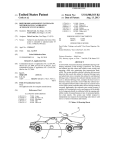
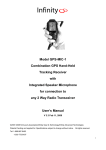
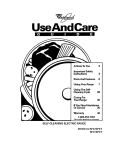


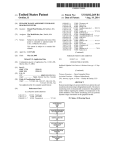
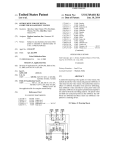
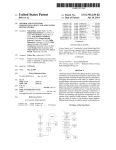
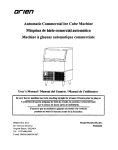
![AGIVEN PROGRAM ]](http://vs1.manualzilla.com/store/data/005708142_1-ae1c6d6b32e7a9016e2dede042b38772-150x150.png)
